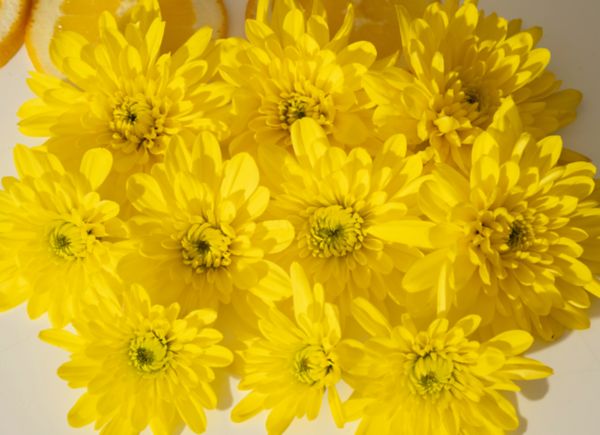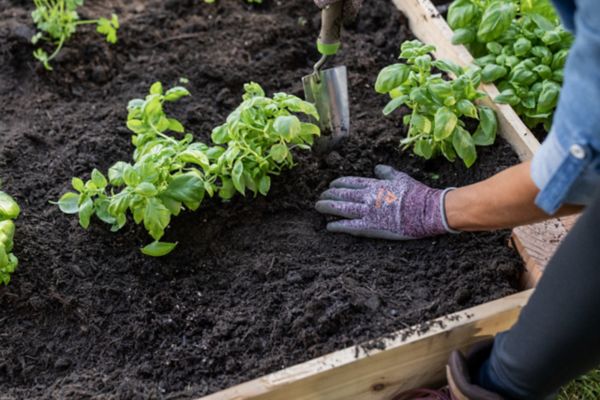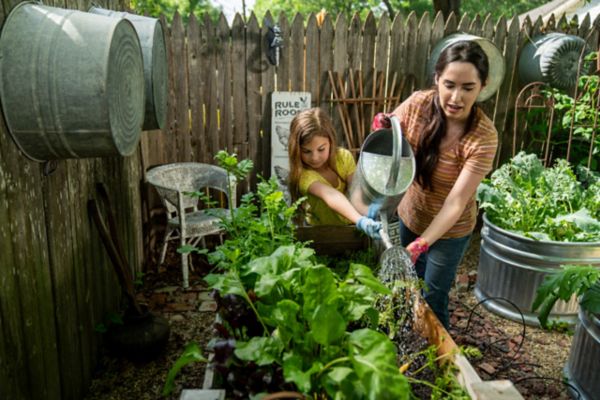How to Grow Parsley
Authored by Leah Chester-Davis
Parsley is a popular culinary herb that too often gets relegated to serving as a garnish but there are many other uses for it. This bright green plant with aromatic foliage has been around for centuries and while its green leaves are attractive and brighten any plate, one of its earliest uses was as a breath freshener.
Parsley has several vitamins and minerals, including A, C, and iron, and is a popular ingredient throughout the world. A mixture of parsley, dill, and chives mixed into a lemon butter sauce and served over new potatoes is such a delicious springtime dish that it will have you adding the herb to your garden. It is also used in soups, salads, and sauces. A mixture of parsley, garlic, and lemon zest is an unbeatable combo, known as gremolata, that pairs well with fish and seafood and is served with classic Italian dishes such osso buco (veal) or as a classic Argentinian steak topper. It is good with chicken and egg dishes, too. It combines with mint in Middle Eastern cuisine such as in tabbouleh salads. It’s even used to make pesto.
The first time I grew parsley many years ago, I was alarmed at first by the number of caterpillars, thinking they were pests. Upon further investigation, I learned that they were caterpillars of the black swallowtail butterfly. It turns out that parsley is a host plant and the black swallowtail caterpillars love it. As far as I’m concerned, that is reason enough to tuck a parsley plant or two into your garden.
About parsley
| Botanical name: | Petroselinum crispum |
| Common name: | Parsley |
| Plant type: | Biennial herb, often grown as an annual |
| Size: | 8 inches to 2 feet tall, depending on the type |
| Sun exposure: | Sun to part shade |
| Soil type: | Average to rich, well-drained |
| Soil pH: | 6.0 to 7.0 |
| Hardiness zones: | 2 to 11 |
| Average first frost: | Varies by region |
| Average last frost: | Varies by region |
| Container friendly: | Yes |
| Beginner friendly: | Yes |
Growing
Parsley is easy to grow and belongs in most any herb or vegetable garden and even in flower beds. It is lovely in containers mixed with other herbs or with ornamentals. It grows in average to rich, well-drained soils with a pH range of 6.0 to 7.0. It grows in full sun, at least 6 to 8 hours each day, and it can tolerate some light shade. In more temperate zones it is a biennial, meaning you may get two seasons of production, particularly in areas that are protected from excessively hot or cold temperatures.
Parsley produces pretty, flavorful foliage the first year. On occasion, particularly in too hot or too cold weather, parsley may bolt (send up flower stalks) during the first season. Cut the flower stalk off the plant so you can continue harvesting leaves though once it bolts the flavor may change and you may want to replace the plant. Parsley will continue producing the second year and that is typically when it will produce flower stalks with flowers that are greenish yellow umbels. You can remove them or let them go to seed and collect the seed or leave it for the birds to enjoy. In colder zones, parsley is grown annually because it has difficulty surviving the harsh winters.
A member of the carrot family, this distinctive flavored herb is available in three forms.
Curly leaf
Curly leaf (Petroselinum crispum var. crispum) is quite common with its tightly frilled or curled leaves. It is used frequently as a garnish and is a bright green color.
Flat leaf
Flat leaf (Petroselinum crispum var. neapolitanum) is a darker green in color and contains more flavor than the curly types, making it more desirable for culinary dishes. It is sometimes referred to as Italian parsley.
Root parsley
Root parsley, (Petroselinum crispum var. tuberosum, sometimes called Hamburg) is grown for a root that looks a lot like a white carrot or a parsnip and can be prepared similarly by either roasting or boiling and eating as a vegetable.
Parsley is a host plant for black swallowtail butterflies - consider adding it to your pollinator garden.
Planting
This herb can grow from seed or transplants. From seed to harvest is about 90 days (about 3 months) and transplants about 60 to 70 days (about 2 and a half months). When sowing seeds either in the garden or inside in pots, soak the seed overnight to enhance germination. Sow parsley seed directly into the garden after the danger of frost has passed and the soil has warmed. In warmer climates, it can be sown in the late fall for a winter harvest. Check with your garden center about best planting times in your area.
Sow about 10 or so seeds every inch or two. Lightly cover with about a 1/8 to ¼ inch of soil. Keep the soil evenly moist. Do not let it dry out. When the seedlings emerge, thin them to about 4 inches apart. If you wish to get a head start, the seed can be started indoors about 8 to 10 weeks (about 2 and a half months) before you wish to transplant them outdoors, or parsley transplants are readily available in garden centers and well worth buying for earlier enjoyment. Place transplants about 8 to 12 inches apart and be careful not to damage the taproots of the plants.
Add a light layer of mulch to help control moisture levels and to help suppress weeds.
During the first year, remove any flower stalks as they form to prevent the plant from going to seed. At the end of the first season and before winter, a layer of straw can help protect it through the winter. In more temperate areas, Zones 7 and warmer, the plant will survive the winter and put out pretty foliage in the spring. It may not overwinter in cold climates.
In more temperate areas, Zones 7 and warmer, the plant will survive the winter and put out pretty foliage in the spring.
Fertilizing
Soils with plenty of organic matter may not need fertilizer. In the absence of a soil test, Minnesota Extension recommends fertilizing once or twice during the growing season with 5-10-5 fertilizer at a rate of three ounces per 10 feet row. For
Controlling Pests, Diseases, and Other Problems
There are usually few serious insect or disease problems for parsley in home gardens. If aphids appear, wash them off with a strong stream of water. Leaf miners may burrow and leave white trails on the leaves. Cut foliage from the plant or start new plants. The caterpillars of the black swallowtail butterfly love to munch on parsley but usually not to the extent that they cause damage. If needed, they can be handpicked off but the benefits of having caterpillars that turn into beautiful pollinators far outweighs any control methods, in my view.
There are usually few serious insect or disease problems for parsley in home gardens.
Harvesting and Storing
When plants are about 6 to 8 inches tall, snip the outside stalks close to the ground rather than cutting off the tops. Harvesting the outside stems helps keep the plant producing. If the entire plant is harvested, cut about 1 1/4 inches above the crown. It will grow back but may be rather slow.
Parsley and most other herbs are best harvested in the morning after the dew dries and before the heat of the day hits.
Storing
Parsley is best when used fresh. It will last several days in the refrigerator. Store in a perforated plastic bag in the refrigerator for up to two weeks. It also is possible to dry or freeze it. To dry, tie in bundles and hang to air dry. When the leaves crumble easily between the fingers, they can be stored whole or crumbled in an airtight container in a cool, dark, dry place. Dried leaves will last up to a year. To freeze, wash the parsley and allow it to drain and dry thoroughly. Wrap a few sprigs in freezer wrap, seal, and freeze. Chopped leaves can also be mixed with water or olive oil and placed into ice cube trays and frozen. When frozen, remove from trays and store the cubes in a ziptop freezer bag. Dried and frozen parsley is best used in soups and other cooked dishes.
Root parsley can be stored like carrots or parsnips. Remove the tops and store in the refrigerator for up to a few months.
Harvest herbs in the morning after the dew dries but before the mid-day heat, or during the evening after sunset.
Expert Tips
Parsley is slow to germinate so Illinois Extension recommends planting radishes in rows with parsley. Because radishes germinate quickly, they help mark the row where the parsley is planted. A few plants are typically enough for a family so unless you want to try your hand at growing them from seed and producing several plants, the best bet may be to buy transplants from your garden center.
Be a friend to the pollinators. Parsley is a beautiful plant to add to a pollinator garden as a special treat for black swallowtails. Plant extra if you wish to use for culinary purposes.
Parsley is beautiful in container combinations with other herbs or with ornamental plants. It pairs well with pansies, violas, snapdragons, various lettuces, ornamental peppers, and Swiss chard. It can also be grown at the front of borders as an edging plant or in hanging baskets.
Frequently asked questions
Will parsley grow indoors during the winter?
Yes, if you have parsley in the garden that you wish to move into a small pot indoors, it will continue to grow inside if you give it plenty of light and a cool spot. It may last through the winter but likely not much longer. After overwintering inside, it may not thrive outdoors in the spring. It may be best to start with a new plant.
Why did my parsley bolt the first year I planted it?
If you have recently planted your parsley and bolting occurs, it may be due to being planted early in the spring with cold temperatures. It can also bolt the first year if the weather is excessively hot. In either case, consider it an annual and replant the following year.
Will cutting off the flower stalks help my plant last longer?
Parsley is a biennial so typically lasts only two years. The flower stalks usually appear the second year but can appear the first year due to extremes in hot or cold weather. Removing the flower stalks usually will not make the plant last longer.







